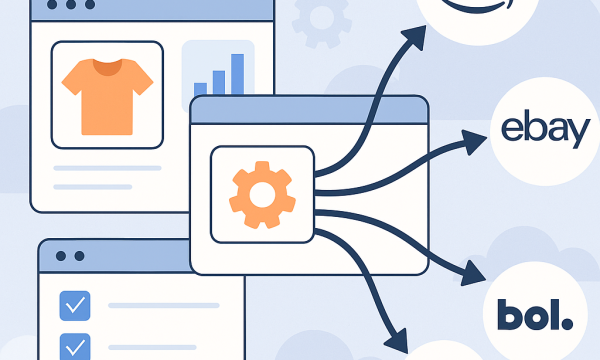Unify Product Experience & Marketplaces
- Nikki Eijpen | 04-06-2025
For digital commerce leaders, managing content, inventory, and orders across channels is a strategic priority. But too often, product information and marketplace operations are managed in silos. This leads to inefficiencies, inconsistent experiences, and missed opportunities.
By aligning Product Experience Management (PXM) with marketplace integration, companies can scale faster, convert better, and build stronger brands. While both solutions deal with product data, they don’t do the same job. Where they overlap is in content syndication and channel management, but one manages the experience, while the other drives execution.

Build better customer experiences with centralized product content
PXM handles centralized management of product content, to build consistent, engaging and converting product experiences across channels:
Centralization, enrichment, and distribution of product data
Creation of rich content (such as Enhanced Brand Content)
Workflows and data quality governance for internal teams
Use for upstream content enrichment and distribution
A good PXM platform is more than a product data repository. It’s a control centre for managing, enriching, and syndicating content across your e-commerce ecosystem. Without PXM, teams waste hours chasing down information, duplicating effort, or uploading content manually. Worse, customers see inconsistent product pages that kill conversion rates.
Recommendation: Salsify stands out for brands managing large assortments across global channels. Its robust modelling, workflow, and syndication capabilities make it a great choice for PXM at scale.
Scale marketplaces faster with operational automation
While PXM powers the product experience, marketplace integration handles the operational backbone: inventory, pricing, order management, and performance analytics:
- Real-time inventory and price sync across marketplaces.
- Order ingestion, routing, and return handling.
- Marketplace performance dashboards.
- Use for up-& downstream commerce execution (inventory, orders, prices)
This is essential when expanding to new marketplaces, especially when every channel has its own rules, APIs, and workflows.
Recommendation: ChannelEngine is one of the top choices for global marketplace management. It supports fast onboarding, real-time syncs, and deep integrations with other systems like the ERP.
Match your tech priorities to your business goals
Both PXM and marketplace integration are critical. But the right starting point depends on your business goals.
PXM-first approach (experience-driven) is best when product content and brand experience are your biggest differentiators:
Content quality = conversion power: Rich product content directly impacts your conversion and return rates; PXM drives more value upfront.
Governance and collaboration at scale: Large teams managing thousands of SKUs across markets benefit from PXM data modelling capabilities, source system integration, workflows, approvals, and digital shelf analytics.
Better long-term brand consistency: PXM enforces a unified product story across multiple channels, which supports brand equity.
A marketplace-first approach (reach-driven) is best when order execution, channel growth, and operational efficiency are most urgent:
Revenue growth via marketplace expansion: If your priority is launching or scaling fast marketplaces, a marketplace integrator delivers immediate revenue via automation and reach.
Order management and inventory control: If order flow, return handling, and inventory sync are currently manual or error-prone, this is your operational bottleneck—not content.
In short:
Go PXM-first if content is your differentiator
Go integration-first if operational scale is your bottleneck
Win with both experience and execution
The irony is: in the long run, it doesn’t really matter which one you start with; you’ll eventually need both. If you start with marketplaces, you’ll soon realize you need to take control over your product experience to sustain conversion and reduce returns. If you start with PXM, you’ll hit operational friction that slows down order flow, inventory sync, and expansion.
If you really must choose, start with the experience. Because no amount of efficiency will compensate for poor product pages that don’t convert. You can optimize operations all you want, but if your product story doesn’t land, the order volume won’t be there to justify it.
The real power lies lies in the combination of both. When PXM and marketplace integration are implemented together, they amplify each other. A clean product feed from your PXM makes channel onboarding faster and more accurate. In return, insights from marketplace performance (like buy box losses, return reasons, or poor PDP engagement) can flow back to the content team to improve product content continuously. You get not only efficiency and consistency, but also a virtuous cycle of performance and improvement.
From strategy to success
At Neortus, we help develop scalable, customer-centric, and integrated e-commerce solutions. Whether you’re building a new platform, optimizing your current systems, or aiming to create a seamless omnichannel experience, we deliver the best digital solution. Get in touch with us today.

